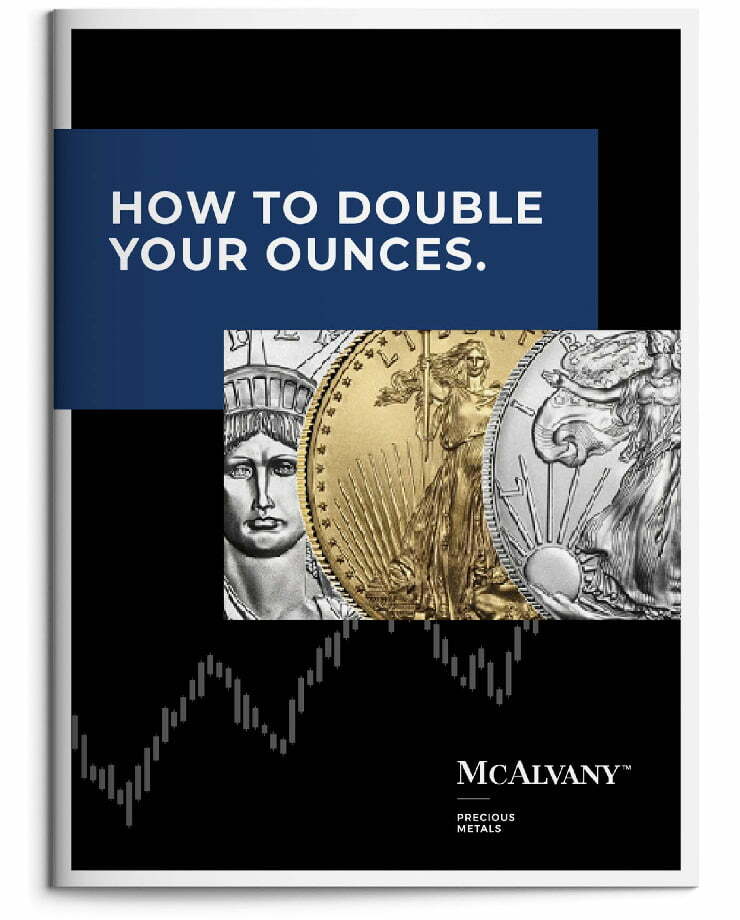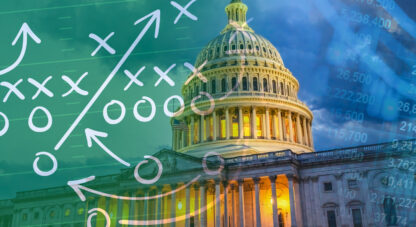Only the Beginning
This author is traveling with family this week. As a result, time is tight, and HAI will get straight to the point.
The U.S. has a serious debt problem. In April of 2016, JPMorgan Chase CEO Jamie Dimon warned that without substantial changes the U.S. would be headed for a reckoning. Excessive debt levels would trigger a crisis down the road. As Mr. Dimon put it in his 2016 annual JPMorgan shareholder letter, “I do not believe that these issues will cause a crisis in the next five to 10 years, and, unfortunately, this may lull us into a false sense of security. But after 10 years, it will become clear that action will need to be taken… This is a tragedy that we can see coming. Early action would be relatively painless.”
At the time, Dimon wasn’t alone in asserting this threat. That same year, legendary investor Stan Druckenmiller also called the U.S. debt quandary “the most unsustainable situation I have ever seen in my career.”
Voices in the Defense Department were also sounding the alarm. In 2011, former Chairman of the Joint Chiefs of Staff Admiral Michael Mullen said, “The number one threat facing America is its rising debt burden. [This threat] is greater than that posed by terrorism, weapons of mass destruction, and global warming… [The debt accumulation] is a broken strategy… It is a failed strategy from a national security perspective.”
In 2015, even former Fed Chair Alan Greenspan candidly warned that “…we need to resolve [this debt problem] before we have a crisis… Unfortunately, though, I don’t see how we are going to get out of this.”
Also in 2015, former Dallas Federal Reserve President Richard Fisher admitted that to help manage the debt problem, “We [the Fed] have been suppressing the yield curve—if rates rise, it’s a ticking time bomb.”
Now, let’s jump back to the present and take stock of where we stand in 2025. It’s not a pretty picture.
Nine years and two months past Dimon’s original warning, we have been living in “a false sense of security,” and no meaningful action has been taken to solve an unsustainable fiscal problem outside of a recent too-late—and now failed—attempt to DOGE the problem away. Sure enough, U.S. debt has increased by over $17 trillion to almost $37 trillion, and the yield on the 10-year Treasury is roughly 300 basis points higher. It is now indeed the “ticking time bomb” Richard Fisher warned of a decade ago.
Not surprisingly, Jamie Dimon was at it again this week, doubling down on his original warnings with even more forceful language. During an interview at the Reagan National Economic Forum in California, Dimon said, “You are going to see a crack in the bond market, OK? It is going to happen… And I tell this to my regulators…it’s going to happen, and you’re going to panic… I just don’t know if it’s going to be a crisis in six months or six years.”
Dimon stressed that, “What I really worry about is us… Can we get our own act together—our own values, our own capabilities, our own management?”
He then added urgently, “People tell me we are enormously resilient. I agree with that[, but] I think this time is different. This time we have to get our act together and do it very quickly.”
Well, in HAI’s view, the effort to “get our act together and do it very quickly” isn’t going well at all. On May 22nd, Mr. DOGE himself, Elon Musk, said ominously, “I have come to the perhaps obvious conclusion that accelerating GDP growth is essential. DOGE has done great work to postpone the day of bankruptcy of America, but the profligacy of government means that only radical improvements in productivity can save our country.”
This week, Mr. Elon “DOGE” Musk was even more vocal. In reaction to Trump’s “Big Beautiful Bill,” Musk tweeted, “I’m sorry, but I just can’t take it anymore. This massive, outrageous, pork-filled Congressional spending bill is a disgusting abomination. Shame on those who voted for it: you know you did wrong. You know it.” He then added, “It will massively increase the already gigantic budget deficit to $2.5 trillion (!!!) and burden American citizens with crushingly unsustainable debt.”
Again, the U.S. has a very serious debt problem, and our last-ditch effort to “get our act together and do it very quickly” has seemingly failed. Indeed, as famed economist Henry Hazlitt once said, “Today is already the tomorrow which the bad economist yesterday urged us to ignore.”
But what about growing GDP and productivity faster than the debt? After all, while productivity measures just dropped, Friday’s June non-farm payrolls report was better than expected with 139,000 new jobs reported versus forecasts of 130,000.
Well, as Jamie Dimon’s colleague at JPMorgan, Chief Global Strategist David Kelly, put it Friday, “This [report] was a lot softer than the headline suggested. To me, one issue is that we saw over 600,000 jobs lost according to the household survey… That was a negative signal. The other thing is cutting [revising jobs lower] 95,000 out of the prior two months. So, we’ve only averaged 124,000 so far this year per month… and it was 168,000 last year. And you know, I’m looking at data [pointing to] a slowdown that is gradually seeping up and spreading across the economy. And I think we’re missing it because we’re looking at headline payroll numbers or the weirdness in terms of trade in GDP…but this economy is gradually slowing down here.”
What’s curious, and perhaps very important information for investors, is that David Kelly’s and JPMorgan’s base case is for long-term interest rates to remain stable or rise further—despite conviction in a slowing U.S. economy. As a reminder, that’s not how our post-1971 dollar-based global system works when healthy. When the post-’71 system is healthy, an economic slowdown means investors buy bonds (yields drop).
It’s a subtle observation, but an important point. While David Kelly didn’t say it outright, the message from JPMorgan is presumably that the economy will slow, but bond yields will still hold steady or even rise. This means that, “Toto, we’re not in Kansas anymore.” The market is now adjusting to the new rules of a new era.
Whether it’s the sheer magnitude of an unsustainable debt burden now having crossed the Rubicon or the expectation that policymakers now have no choice but to inflate that debt burden away—or both—the market is now changing its behavior and avoiding bonds despite a slowing economy.
Last week, HAI reported comments from Agustin Carstens, General Manager of the Bank for International Settlements (the central bank of national central banks), warning that, “the days of ultra-low rates are over. Fiscal authorities have a narrow window to put their house in order before the public’s trust in their commitments starts to fray… Markets are already waking up to the fact that some paths are not sustainable… That is why fiscal consolidation in many economies needs to start now. Muddling through is not enough.”
In HAI’s view, the crucial message in the nearly $2,500/oz increase in the gold price since Jamie Dimon’s original warning on debt is that the public trust in government commitments has already started to materially fray.
The idea that David Kelly and JPMorgan are now expecting a slowdown in the economy along with steady or rising bond yields is another powerful signpost. Western investor consensus isn’t far from recognizing that we’re no longer playing by the old rules. Gold is the new reserve asset best suited to start replacing U.S. government bonds in the 40% portion of the traditional 60/40 Western investor asset allocation model. Considering that Western investors currently hold only approximately 1% of gold and related assets, it stands to reason that gold’s nearly $2,500/oz price gain since 2015 is only the beginning.
Weekly performance: The S&P 500 was up 1.50%. Gold was up 0.63%, silver launched by 9.03%, platinum surged 11.85%, and palladium jumped 9.08%. The HUI gold miners index was up 5.26%. The IFRA iShares US Infrastructure ETF was up 1.65%. Energy commodities were volatile and higher on the week. WTI crude oil gained 6.55%, while natural gas jumped 9.81%. The CRB Commodity Index was up 3.60%. Copper gained by 2.97%. The Dow Jones US Specialty Real Estate Investment Trust Index was up 0.30%. The Vanguard Utilities ETF was off 0.94%. The dollar index was nearly flat, off 0.14% to close the week at 99.19. The yield on the 10-yr U.S. Treasury was up 10 bps to close at 4.51%.
Have a wonderful weekend!
Best Regards,
Morgan Lewis
Investment Strategist & Co-Portfolio Manager
MWM LLC















